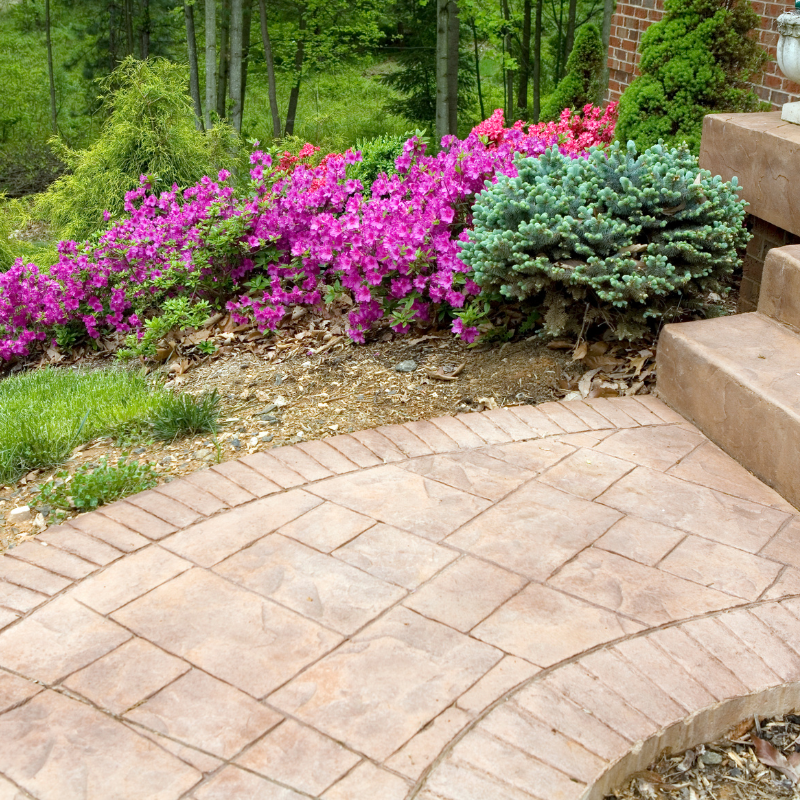When it comes to home improvement, concrete doesn’t always get the spotlight—but it should. It’s one of the most durable and versatile materials out there, and when used correctly, it can add both function and style to your property. Whether you're building from the ground up or upgrading your existing surfaces, concrete has a way of quietly doing the heavy lifting while still offering plenty of room for creativity. From clean, smooth walkways to custom-stamped patios, quality concrete work can seriously elevate the look and performance of your space.
Durable And Custom Concrete Flatwork That Stands The Test Of Time
Concrete flatwork might seem like a pretty straightforward concept, but it plays a huge role in the structure and function of your property. Whether it’s a clean-cut driveway leading up to your home, a smooth backyard patio for hosting, or the sturdy sidewalk that winds through your landscaping, these surfaces aren’t just for looks—they’re built to support and perform. What makes concrete flatwork so ideal is its ability to provide a nearly perfect level surface. That’s something not many materials can pull off with the same consistency and strength.
What’s great about concrete is that it’s not a one-style-fits-all kind of material. It’s incredibly adaptable. You can go with a sleek, modern look or opt for decorative designs and textures that add a bit more personality to your space. Want a cobblestone-inspired walkway that’s actually smooth to walk on? You got it. Prefer a brushed finish that adds grip for high-traffic areas? That’s doable too. Concrete lets you blend functionality with design without having to sacrifice either. Whether it's driveways, foundations, or walkways, quality flatwork provides the foundation—literally—for long-term performance.
Why Concrete Steps Make A Practical, Long-Term Choice
If you're thinking about replacing old stairs or installing new ones, concrete steps are definitely worth considering. They’re one of those upgrades that don’t just look solid—they are solid. Whether you're dealing with high foot traffic outside your front door or need something stable leading from your garage into your home, concrete steps hold up in ways that other materials struggle to match.
Unlike wood, concrete doesn't rot, warp, or invite termites to dinner. And unlike metal, it doesn’t rust after a rainy season or in humid areas. It’s that kind of low-maintenance dependability that makes concrete steps such a smart investment, especially in places where the weather likes to keep you guessing. Indoors or outdoors, they offer a clean look and serious durability, all without requiring the ongoing upkeep that other materials demand. Plus, if you want them to look more polished or decorative, there are finishing techniques that can elevate the visual appeal without giving up strength.
Adding Style With Stamped Concrete
Concrete might not be the first material that comes to mind when you think of visual flair, but stamped concrete has flipped that idea on its head. It’s a fantastic way to add character to any space—be it a patio, a pool deck, or even an indoor feature. Stamping gives you all the benefits of concrete (toughness, longevity, easy upkeep) while allowing you to mimic the look of high-end materials like flagstone, tile, brick, or even wood grain. And the best part? You don’t have to deal with the downsides that come with those materials, like shifting bricks or fading tiles.
The design possibilities with stamped concrete are nearly endless. You can keep things subtle and classic or go bold with intricate patterns and unique colors. It’s especially popular for outdoor spaces where homeowners want something a little more refined than plain gray concrete. Whether you’re after a rustic backyard escape or a crisp, modern entryway, stamped concrete lets you customize your space to match your taste and lifestyle—without compromising durability.
Handling The Wear And Tear: Concrete Repairs That Last
Even though concrete is built to be strong, it’s not immune to wear and tear. Over time, exposure to the elements, heavy use, and good old-fashioned age can leave behind cracks, chips, or uneven surfaces. It happens. That doesn’t mean you need to tear it all out and start from scratch. In many cases, targeted concrete repairs can breathe new life into your surfaces, making them functional and good-looking again.
Timely repair is more than just cosmetic—it can prevent bigger structural problems down the line. Whether it’s patching up a rough spot on your front steps or reinforcing part of a worn-down foundation, professional repairs ensure the damage doesn’t spread or create hazards. It's about restoring the surface the right way, using the proper materials and techniques to make sure the fix holds up. A reliable team can assess the situation quickly and come up with a repair solution that gets things back to normal without dragging out the process longer than it needs to be.
Whether you’re dreaming up a brand-new stamped patio, need a reliable set of front steps, or you’ve just noticed a crack in the driveway that’s been getting worse, professional help can make all the difference. At B&G Remodeling, we know how important it is to get the job done right the first time—with attention to detail, quality craftsmanship, and a focus on long-term performance. If you’ve got questions or want to talk about your next concrete project, contact us today!
Frequently Asked Questions About Concrete
Q1. How do I know if my home improvement project needs new concrete or just a repair?
A1. The answer depends on the extent of the damage. Small cracks, surface flaking, or minor unevenness can often be resolved with patching or resurfacing. However, if the concrete is crumbling, sinking, or showing widespread cracking, it’s likely time for a full replacement. Structural integrity, age, and how the concrete was originally poured all play a role. A professional assessment can help determine the most cost-effective and long-lasting solution.
Q2. How long does it take for concrete to fully cure, and can I walk or drive on it sooner?
A2. Concrete reaches about 70% of its full strength after seven days and fully cures in 28 days. You can usually walk on it after 24–48 hours and drive on it after about a week, depending on the type of project and weather conditions. However, for heavy loads or decorative finishes, it’s best to wait the full curing period to avoid surface damage or premature wear.
Q3. Can concrete be customized for decorative purposes, or is it just a plain gray slab?
A3. Concrete is far more versatile than most people realize. It can be stamped, stained, polished, or even embedded with designs to mimic stone, tile, or brick. You can choose from a wide range of colors and textures to match the look of your home or outdoor space. Whether it's a sleek modern patio, a rustic-looking walkway, or a decorative driveway, concrete can be tailored to fit your vision with style and strength.

